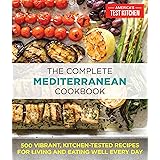Have you ever found yourself standing in the grocery aisle, hand hovering between two identical packages of produce, one labeled “organic” and the other not? A common dilemma faced by many health-conscious shoppers revolves around whether the added expense of organic food genuinely translates into better health outcomes. It is a question often pondered, especially when considering the ever-growing cost of living and the desire to make every dollar count towards family wellness. This decision-making process can be made simpler, however, by understanding the nuances of organic certification and the specific characteristics of various foods. The video above has already shed light on some of these considerations, offering valuable insights into where your organic budget might be best allocated.
Indeed, discerning which foods truly necessitate an organic label and which do not can lead to significant savings without compromising health. Certain items, by their nature or cultivation methods, absorb fewer harmful substances, making their non-organic counterparts a perfectly acceptable and more economical choice. Conversely, some fruits and vegetables act like sponges for pesticides, rendering an organic selection almost essential for reducing exposure to toxins. This discussion aims to further elaborate on these points, providing a more detailed guide to informed organic shopping choices, thereby helping consumers navigate the often-confusing landscape of food labels and health claims.
Understanding Organic Certifications and Hidden Details
Organic certification is a rigorous process, indicating that food products are produced without synthetic pesticides, genetically modified organisms (GMOs), or artificial fertilizers. For animal products, this typically means the animals are not given growth hormones or antibiotics, and they consume organic feed. This certification process, while valuable, can sometimes create a perception that all organic products are universally superior to their conventional counterparts in every aspect. However, it is essential for shoppers to be aware that the term “organic” itself holds specific parameters which may not encompass all desired health attributes.
One critical detail often overlooked is the regulation concerning packaged organic foods, where up to five percent of the ingredients are permitted to be non-organic. This seemingly small percentage can harbor significant implications, particularly if those non-organic components introduce undesirable elements like certain pesticides or additives. Therefore, reading the full ingredient list on any packaged organic item is strongly advised to ensure that all constituents align with personal health standards. For instance, even a small concentration of a potent chemical might be considered a risk, especially for those with sensitivities or specific health concerns that are being managed.
The Nuances of Organic Meat and Poultry
When it comes to animal products, the organic label primarily signifies that the animals were raised without antibiotics or hormones and fed organic grains. However, as was touched upon in the video, the type of feed, even if organic, plays a crucial role in the nutritional profile of the meat. Grains, regardless of their organic status, can alter the fatty acid composition of the meat, leading to a less beneficial omega-3 to omega-6 ratio. A superior choice, when available, is often grass-fed and grass-finished meat, which inherently offers a better fatty acid profile due to the animals’ natural diet of pasture.
Therefore, when selecting meat, poultry, or even dairy, it is often recommended that the focus be placed on sourcing products from animals raised without antibiotics or hormones and, if possible, those that are pasture-raised or grass-fed. This approach allows consumers to prioritize the core attributes of animal welfare and nutritional quality over a blanket organic label. The additional step of investigating local farms or specialty butchers can sometimes yield products that meet these criteria, potentially at a more reasonable price point than some nationally distributed organic options, making informed choices even more accessible for individuals looking to enhance their dietary intake.
The Perils of Pesticides: What You Need to Know
Pesticides are chemical substances used to destroy or control pests, including insects, weeds, fungi, and rodents. While they are instrumental in modern agriculture for ensuring crop yields, their pervasive use has raised significant health concerns. Many pesticides are recognized as known carcinogens, substances capable of causing cancer, and their presence in our food supply is a serious public health issue. Exposure to these chemicals has also been linked to neurological problems, hormonal disruptions, and developmental issues, particularly concerning children, whose smaller body mass makes them more vulnerable to even minute quantities.
The absorption rate of pesticides by different plants varies significantly, influencing how much residue remains on the produce even after washing. Foods with porous skins or those that grow close to the ground tend to absorb and retain more pesticides, making them a higher risk for conventional consumption. Conversely, produce with thick, impermeable skins often provides a natural barrier against chemical penetration. Understanding these differences allows for a more strategic approach to grocery shopping, ensuring that investments in organic options are made where they are most impactful in mitigating pesticide exposure and protecting health for the entire family.
Prioritizing Organic: Produce You *Should* Buy Organic
Given the varying levels of pesticide absorption and retention, certain fruits and vegetables truly benefit from being purchased organic. These items are often highlighted on lists like the Environmental Working Group’s (EWG) “Dirty Dozen,” which identifies produce with the highest pesticide residues. Making a conscious effort to buy these particular foods in their organic form can significantly reduce your dietary exposure to harmful chemicals, contributing to a cleaner and healthier eating regimen for the entire household.
1. Strawberries
Strawberries are a prime example of produce where organic purchasing is highly recommended. These small, porous berries sit close to the ground during their growth cycle, making them exceptionally susceptible to pesticide sprays. Their tender, absorbent flesh means that even thorough washing may not effectively remove all the chemical residues that have permeated their structure. Research consistently shows that conventionally grown strawberries often contain a cocktail of multiple pesticide residues, some of which are known to be quite potent. Opting for organic strawberries is a simple yet impactful way to reduce potential exposure to these persistent compounds.
2. Spinach
Like strawberries, spinach is another leafy green known for its high pesticide retention. Its delicate, spongy leaves readily absorb chemicals from the environment, and its expansive surface area makes it an easy target for agricultural sprays. What’s more concerning is that spinach has been found to carry significantly higher pesticide residues compared to other leafy greens, sometimes up to 1.8 times more. When spinach is cooked, these absorbed pesticides can leech out into the cooking oil or water, potentially contaminating the entire dish. Therefore, choosing organic spinach is a judicious decision to minimize the intake of these unwanted substances.
3. Kale
Once hailed as a superfood, kale’s reputation has been somewhat tarnished by recent findings regarding its pesticide load. While it possesses some nutritional benefits, its dense, crinkly leaves are unfortunately efficient at trapping and absorbing pesticides. Alarmingly, studies have revealed that a significant portion of conventionally grown kale, approximately 60%, contains Dacthal (DCPA), a pesticide banned in Europe due to its classification as a probable human carcinogen. Moreover, roughly 92% of all conventional kale samples have tested positive for pesticide residues. Considering its high pesticide content and questionable overall nutrient density compared to other greens, consumers might either choose organic kale or consider alternative, cleaner leafy greens that offer similar or superior health benefits.
4. Peppers, Tomatoes, and Celery
Rounding out the list of produce to prioritize for organic purchasing are peppers, tomatoes, and celery. These vegetables consistently appear on “Dirty Dozen” lists due to their propensity for absorbing pesticides. Bell peppers, with their thin skin and internal cavity, can be particularly vulnerable to residue accumulation. Tomatoes, another staple in many kitchens, are frequently treated with a variety of pesticides throughout their growing season. Celery, much like spinach, has a fibrous, absorbent stalk that retains pesticides even after washing. Given their frequent consumption in many diets, choosing organic versions of these items provides an important layer of protection against chemical exposure, supporting overall well-being for consumers.
5. Packaged Organic Foods
While the focus is often on fresh produce, selecting organic options for packaged foods can also be highly beneficial. Packaged foods, by their nature, contain multiple ingredients, and conventional versions often include a plethora of additives, preservatives, artificial colors, and flavors, along with ingredients that may have been heavily treated with pesticides. Opting for organic packaged goods generally ensures that a higher standard of ingredient sourcing is maintained, minimizing exposure to these additional components. Remember, as previously discussed, it is crucial to carefully read labels even on organic packaged items, ensuring that the full ingredient list aligns with your health goals, as up to 5% of ingredients can be non-organic.
Smart Savings: Produce You *Don’t* Need to Buy Organic
Conversely, there is a substantial list of fruits and vegetables that possess natural defenses against pesticide absorption, making their conventional counterparts safe and economical choices. These items frequently appear on the Environmental Working Group’s (EWG) “Clean Fifteen” list, indicating minimal pesticide residues. By strategically choosing conventional options for these foods, shoppers can significantly stretch their grocery budget without compromising on health or safety, allowing for greater financial flexibility when stocking the kitchen with nutrient-dense foods.
1. Avocado
Avocados stand out as an excellent example of a food that rarely requires an organic label. Their thick, robust skin acts as an impressive natural barrier, effectively shielding the edible flesh from pesticide penetration. Studies consistently show that less than one percent of conventionally grown avocados contain detectable pesticide residues, making them one of the cleanest conventional produce items available. Considering that organic avocados often command a price two to three times higher than their conventional counterparts, choosing the non-organic option presents a significant opportunity for saving money, especially for those following diets where avocados are a dietary staple.
2. Onions
Onions, with their multiple protective layers and pungent nature, are naturally resistant to many pests and diseases, reducing the need for extensive pesticide application. Their papery outer skins are consistently removed before consumption, further minimizing any potential exposure to surface residues. This inherent resilience makes conventional onions a perfectly safe and budget-friendly choice for culinary needs. They contribute excellent prebiotic fibers to the diet, making them a valuable inclusion without the need for an organic premium.
3. Tough-Skinned Fruits (Kiwi, Melons, Pineapple, Papaya, Guava, Mango)
Fruits characterized by a thick, inedible outer skin, such as kiwis, melons (like watermelon and cantaloupe), pineapples, papayas, guavas, and mangoes, generally do not warrant organic purchases. The impenetrable nature of their rinds effectively prevents pesticides from reaching the edible inner fruit. Before consumption, these skins are typically peeled away and discarded, ensuring that any external residues are removed. This protective layer means that the risk of consuming pesticides from these conventional fruits is exceptionally low, allowing for smart savings on your grocery bill.
4. Asparagus
Asparagus is another vegetable where opting for conventional varieties is perfectly acceptable. This slender green stalk is known for its natural resistance to many pests, meaning it requires minimal pesticide intervention during its cultivation. Furthermore, any minimal residues can typically be washed away. The price difference between organic and conventional asparagus can be substantial, with organic bunches often costing upwards of two to three times more. Therefore, selecting conventional asparagus allows for considerable cost savings while still enjoying this nutritious vegetable without undue concern for pesticide exposure.
5. Broccoli and Cauliflower
Broccoli and cauliflower, both members of the cruciferous family, are generally considered safe to purchase conventionally. These vegetables possess a fairly tight, dense structure that makes it challenging for pesticides to penetrate deeply. They also exhibit a natural ability to ward off many common pests, which means they are not typically subjected to heavy pesticide spraying. A simple wash before consumption is usually sufficient to remove any superficial residues, ensuring that these nutrient-dense vegetables can be enjoyed economically. Their robust growth patterns contribute to their lower pesticide footprint.
6. Eggplant
Eggplant, with its relatively thick and smooth skin, also holds up well against pesticide absorption. It is not typically ranked among the highest in pesticide residues, making the conventional option a sensible choice for budget-conscious shoppers. Like many other items on the “Clean Fifteen” list, its physical characteristics provide a degree of natural protection against environmental contaminants. Standard washing practices are typically adequate for preparing conventionally grown eggplant for cooking.
7. Mushrooms
Mushrooms are distinct in their growth characteristics; as fungi, they thrive in environments often independent of direct soil cultivation and extensive pesticide application. They are not typically prone to insect infestations in the same way leafy green vegetables are, thus conventional farming practices usually do not require heavy pesticide use for their growth. While it is always prudent to wash mushrooms before use, concerns about pesticide residues are generally very low for both conventional and organic varieties. This makes conventional mushrooms a safe and economical addition to any diet.











